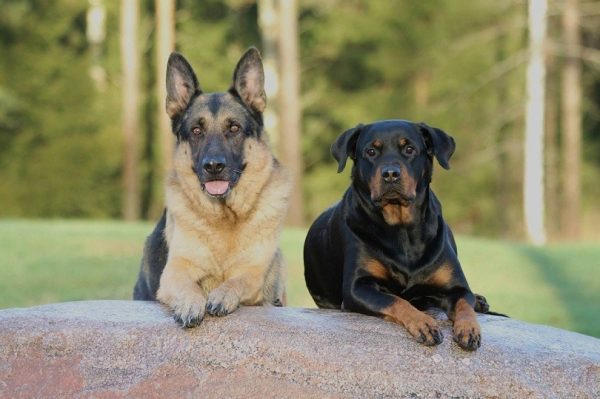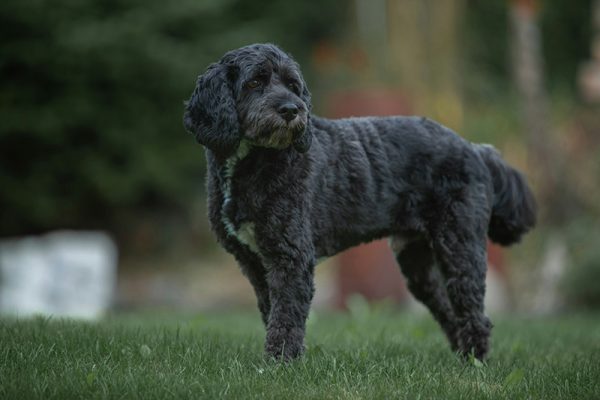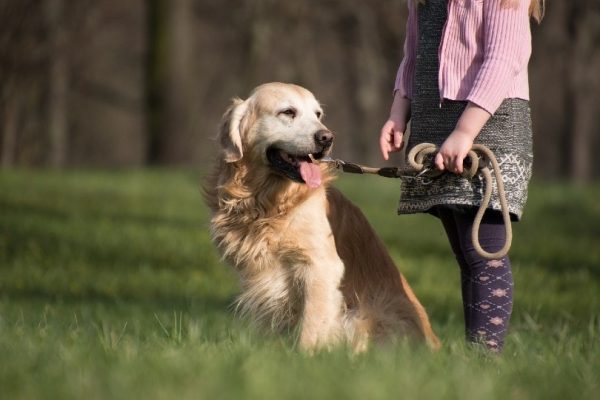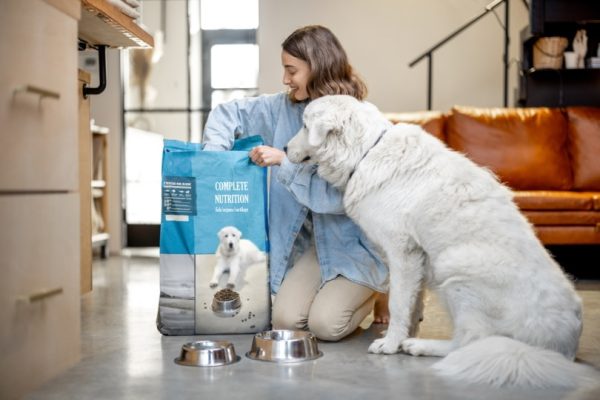
Border Collies are considered the most intelligent dog breed on the planet. However, they need a job, and if you do not use them for herding (which they were born to do), you must get creative in keeping them physically and mentally stimulated to prevent destructive behaviors from arising.
Finding a toy that can withstand the challenge of the Border Collie takes time and patience. You want durable and engaging toys, and in this guide, we’ve compiled a list of the 10 best Border Collie toys based on reviews to help you choose wisely.
In this article

A Quick Comparison of Our Favorites in 2025
| Rating | Image | Product | Details | |
|---|---|---|---|---|
| Best Overall |
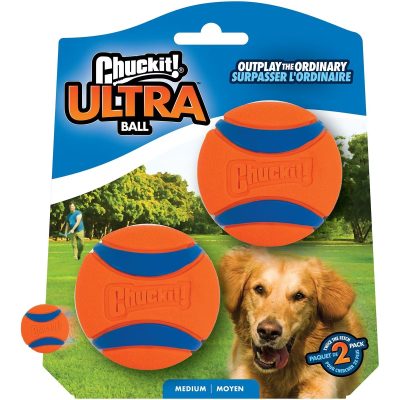
|
Chuckit! Ultra Rubber Ball Tough Dog Toy |
|
Check Price |
| Best Value |

|
Benebone Bacon Flavor Wishbone Tough Dog Chew Toy |
|
Check Price |
| Premium Choice |
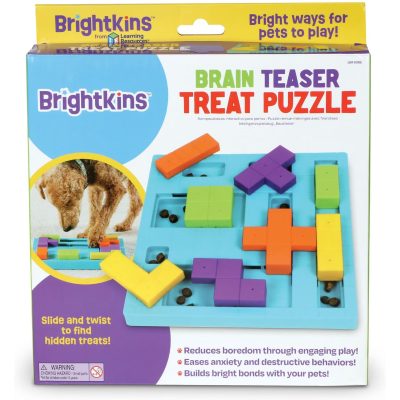
|
Brightkins Brain Teaser Treat Puzzle Dog Toy |
|
Check Price |
| Premium Choice |

|
KONG Puppy Goodie Bone Dog Toy |
|
Check Price |

|
Starmark Treat Dispensing Chew Ball Tough Dog Toy |
|
Check Price |
The 10 Best Border Collie Toys
1. Chuckit! Ultra Rubber Ball Tough Dog Toy – Best Overall

| Material: | Rubber |
| Life stage: | Adult |
| Toy feature: | Tough chewer, bouncy |
The Chuckit! Ultra Rubber Ball Tough Dog Toy is a durable ball designed to last. It can be used on land or in water, and its bright orange color makes it easily visible. It’s encased with an extra-thick rubber core that stands up to the toughest chewers, and you can either throw it by hand or buy the Chuckit! Ball Launcher for even more fun.
Given its durability, this ball is difficult to pass up and should be in your Border Collie’s toy box. It comes in a pack of two and is roughly the same size as a tennis ball, only much more durable. The balls are also affordable and come in various sizes, making them the best overall Border Collie toy.
Bear in mind that no toy is indestructible, and even though the Chuckit! toy is durable, it still may not hold up to strong chewers, and supervision is recommended.
- Strong and durable
- Use on land or water
- Extra-thick rubber core
- Compatible with Chuckit! Ball Launcher
- Affordable
- May not hold up to strong chewers
2. Benebone Bacon Flavor Wishbone Tough Dog Chew Toy – Best Value

| Material: | Nylon |
| Life stage: | Medium breeds |
| Toy feature: | Dental, tough chew |
If your Border Collie loves a chew toy with flavor, the Benebone Bacon Flavor Wishbone Tough Dog Chew Toy will surely be a hit. This tough toy is almost irresistible to dogs who love bacon, and it also cleans their teeth as they chew. It features a dog-friendly design for easy grasping, and each prong has a flavor deeply embedded in grooves to keep your pup engaged. It’s made and packaged in the USA with nylon and real bacon and is designed to last a few weeks or more.
The only drawback is that this is strictly a chew toy, so you must supply your Border Collie with different toys for playing. Given how long the Benebone lasts, we feel it’s the best Border Collie toy for the money.
- Made from real bacon
- Tough and durable
- Designed for grasping
- Made and packaged in the USA
- Made only for chewing
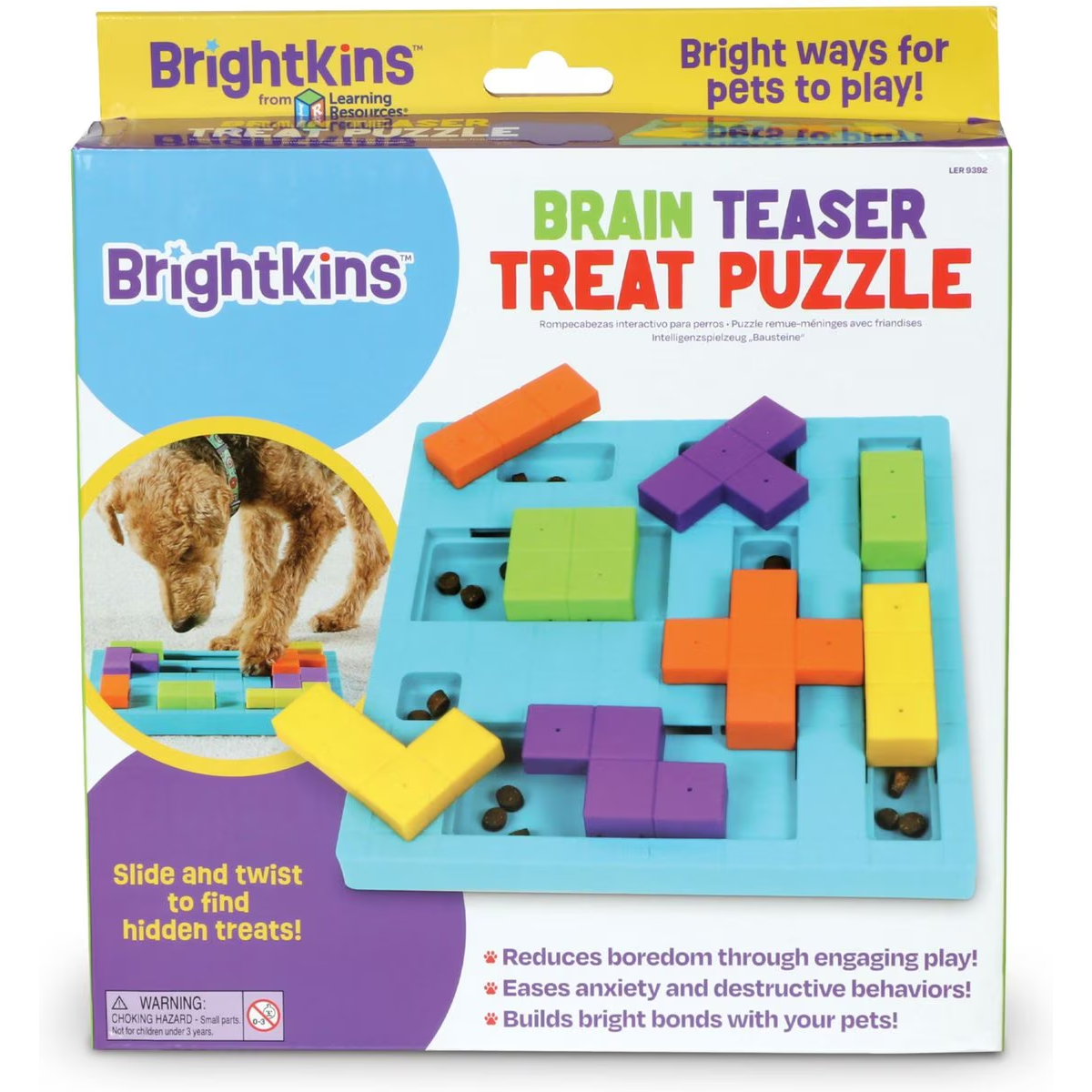
| Material: | Thermoplastic rubber |
| Life stage: | All life stages |
| Toy feature: | Training, mental stimulation |
If you’re looking for a toy that provides mental stimulation, the Brightkins Brain Teaser Treat Puzzle Dog Toy is a good choice. This interactive puzzle toy has sliding, spinning, and shifting blocks that hide treats, encouraging your Border Collie to find them. You can also use the toy as a slow feeder or a treat dispenser for playtime.
The Brightkins Brain Teaser is made from BPA-free materials and is durable and easy to clean. The thermoplastic rubber allows for the toy’s longevity, and it comes complete with non-skid feet to keep the toy in place while your dog plays.
A common complaint is that this toy is too easy, and considering the intelligence of the Border Collie, it may not entertain them for long.
- Made from BPA-free materials
- Can use as a slow feeder
- Excellent for mental stimulation
- Non-skid feet
- May be too easy for Border Collies
4. KONG Puppy Goodie Bone Dog Toy – Best for Puppies

| Material: | Rubber |
| Life stage: | Puppy |
| Toy feature: | Teething |
If you have a Border Collie puppy, the KONG Puppy Goodie Bone Dog Toy will help keep them occupied while providing mental stimulation. The soft rubber helps soothe sore gums from teething, and it also helps with brain development by holding treats for your puppy to find. It’s specifically designed for puppies up to 9 months old and comes in pink or blue—a nice twist is that you don’t pick the color; it comes as a fun surprise.
Supervision is recommended while your puppy chews the KONG. The toy is not designed for power chewers, and it doesn’t take long for your BC puppy to become a power chewer. If you see your puppy bite off chunks, discard the toy immediately.
- Provides mental stimulation
- Designed for puppies up to 9 months old
- Soothes sore gums from teething
- Can stuff with treats
- Not durable for power chewers
5. Starmark Treat Dispensing Chew Ball Tough Dog Toy
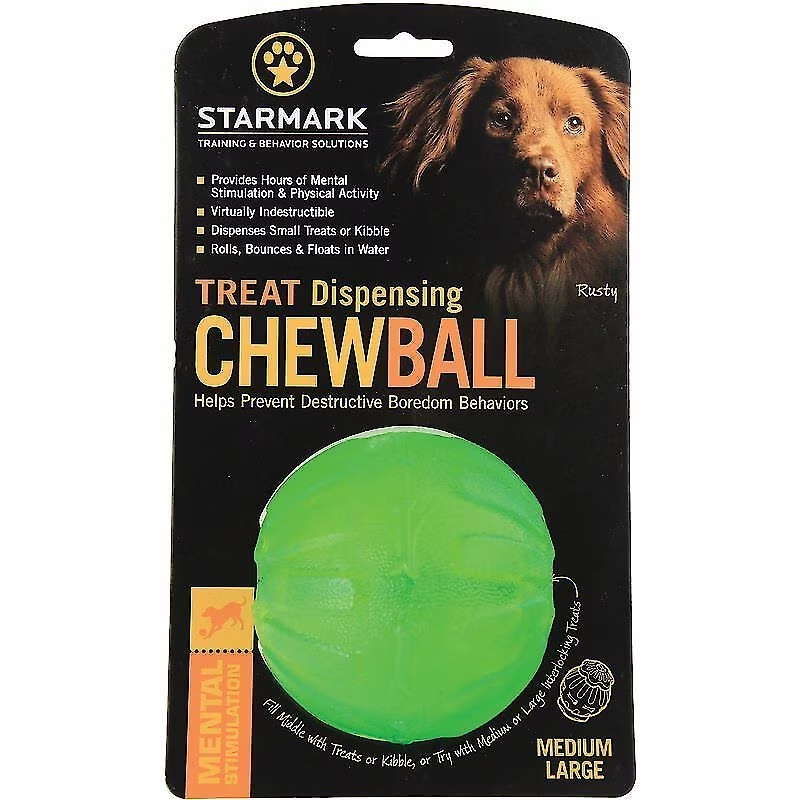
| Material: | Plastic |
| Life stage: | Adult, seniors |
| Toy feature: | Tough chewer |
The Starmark Treat Dispensing Chew Ball Tough Dog Toy is durable and helps prevent boredom, which usually leads to destruction. This plastic ball rolls and bounces to provide exercise and floats in water. You can fill it with treats for mental stimulation, and it’s advertised as “virtually indestructible.” It’s latex-free, dishwasher safe, and will keep your Border Collie occupied.
A common complaint is that the ball smells strongly of chemicals and does not hold up well to power chewers.
- Helps prevent boredom
- Rolls and bounces during playtime
- Floats in water
- Fill with treats for stimulation
- Dishwasher safe
- Strong chemical smell
- Doesn’t hold up with power chewers.
6. Earth-Rated Tug Dog Toy
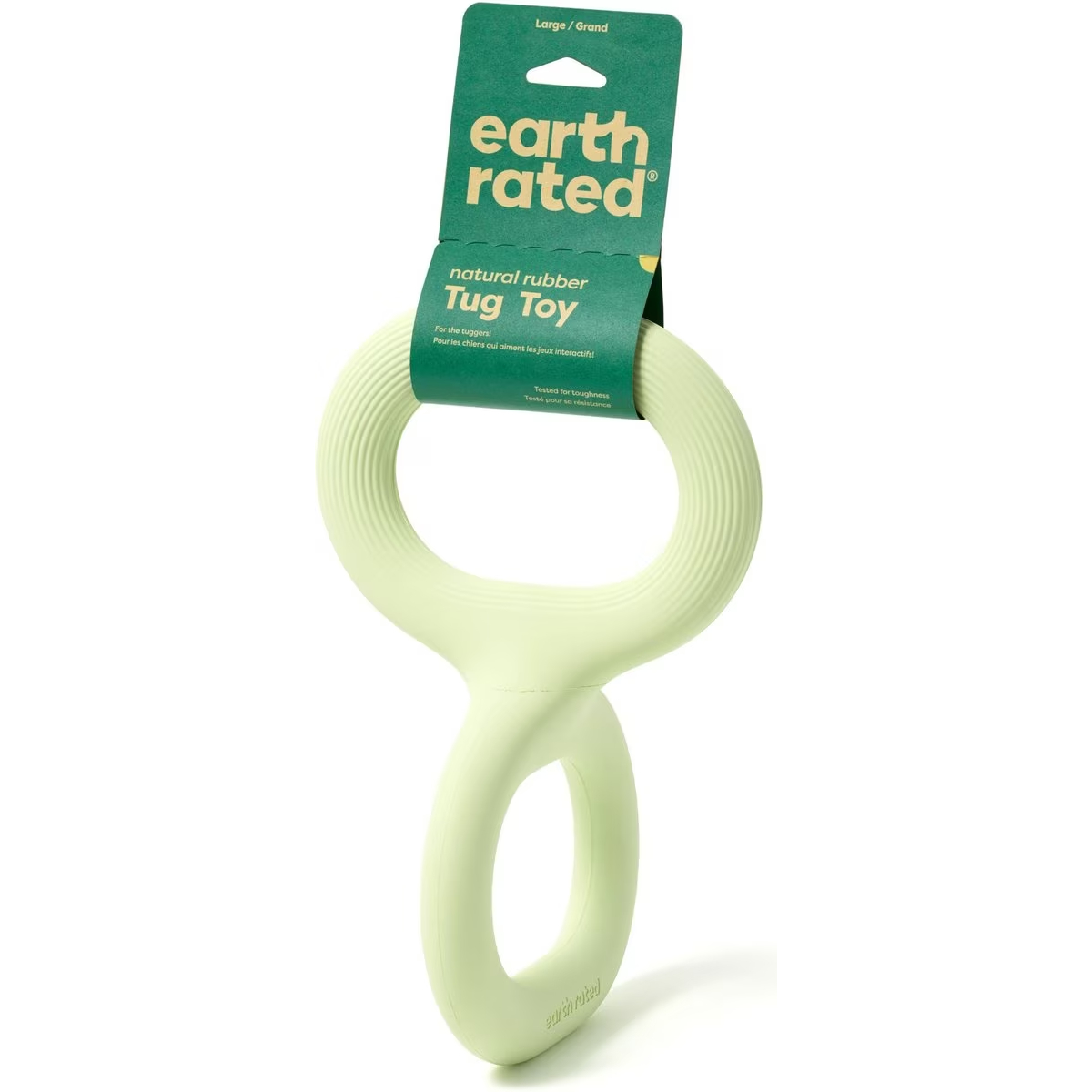
| Material: | Rubber |
| Life stage: | Adult, seniors |
| Toy feature: | Exercise |
The Earth-Rated Tug Dog Toy is made from durable natural rubber and has been rigorously tested for toughness. It has two ergonomic handles that are perfect for a game of tug-of-war, and the ergonomic shape supports a natural range of wrist motion to prevent injuries. The handles keep you safe from your Border Collie during play, and the toy is easy to grab. It’s also dishwasher-safe.
It comes in small and large sizes, but the small toy may still be too large for smaller Border Collies.
- Made from durable natural rubber
- Perfect for tug-of-war
- Two ergonomic handles
- Dishwasher-safe
- The small size may still be too large
7. Booda Multi-Color 2-Knot Rope Bone Dog Toy
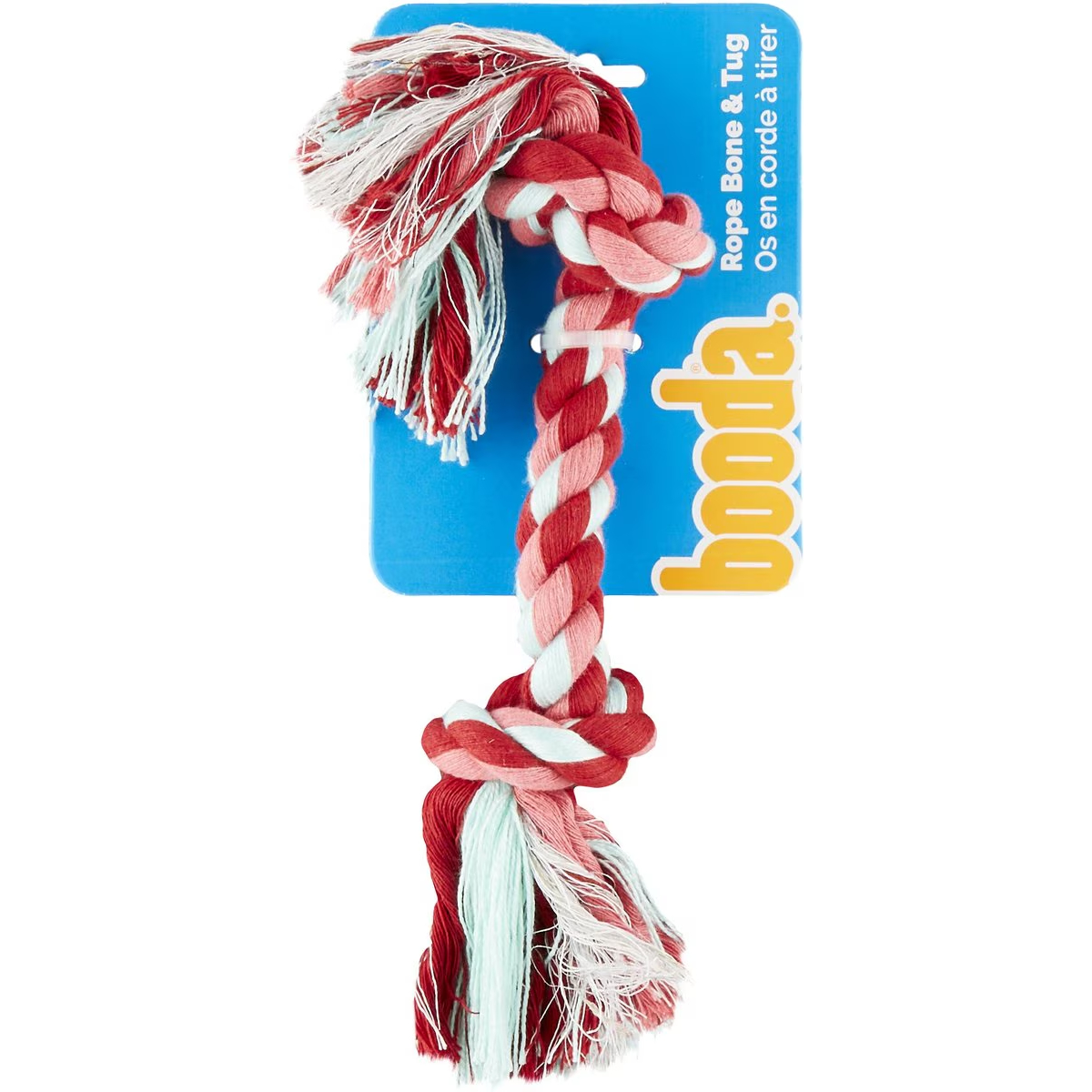
| Material: | Cotton, natural fabric |
| Life stage: | Adult |
| Toy feature: | Dental |
The Booda Multi-Color 2-Knot Rope Bone Dog Toy is perfect for the Border Collie who loves to play tug-of-war. This versatile rope toy is also fun for a game of fetch or to chew, which aids in dental health. The soft, tightly twisted cotton is machine washable, and it’s available in five sizes and ships in various colors.
Some Border Collies may destroy this toy quickly depending on their chewing and play habits, and you must not allow your pup to swallow the strings should they become unraveled.
- Perfect for play, chew, and dental
- Machine washable
- Comes in 5 sizes with various colors
- May get destroyed quickly
8. Project Hive Chew Toy for Large Dogs
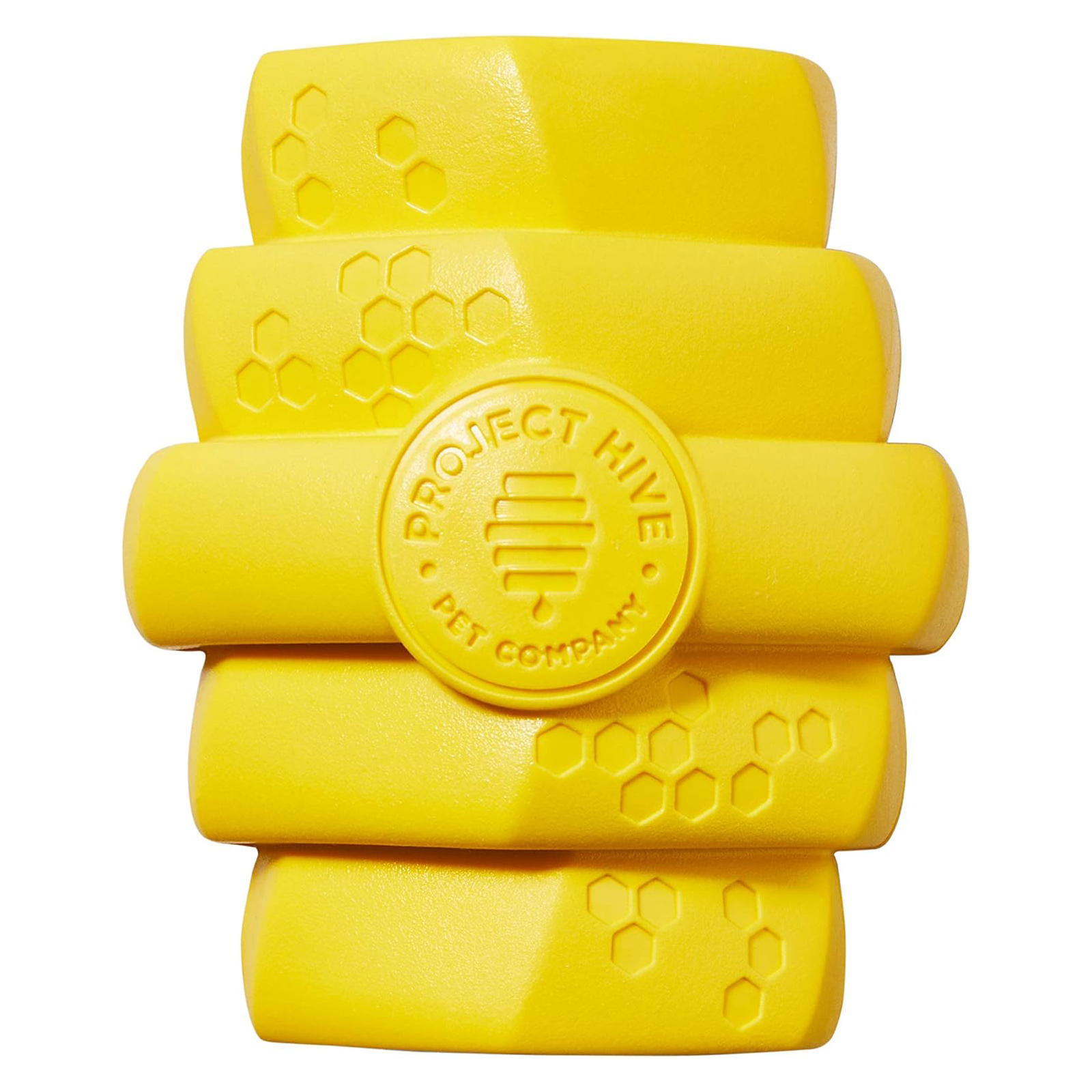
| Material: | Thermoplastic rubber |
| Life stage: | Adult |
| Toy feature: | Exercise, water toy |
The Project Hive Chew Toy for Large Dogs is also available in a smaller size if your Border Collie isn’t a big pup. The uniquely shaped toy is dishwasher safe and floats, so your dog can play with it in the pool.
The thermoplastic construction is latex, BPA, and phthalates-free, and it makes an irregular bounce to attract your dog when you throw it. The Hive toy is made in the USA, and you can stuff it with treats to challenge your Border Collie. Although it’s durable, it won’t withstand abuse from heavy chewers.
- Made with recycled materials
- Buoyant design for the water
- Free from BPA-plastic, latex, and phthalates
- Not for heavy chewers
9. Chuckit! Flying Squirrel Dog Toy
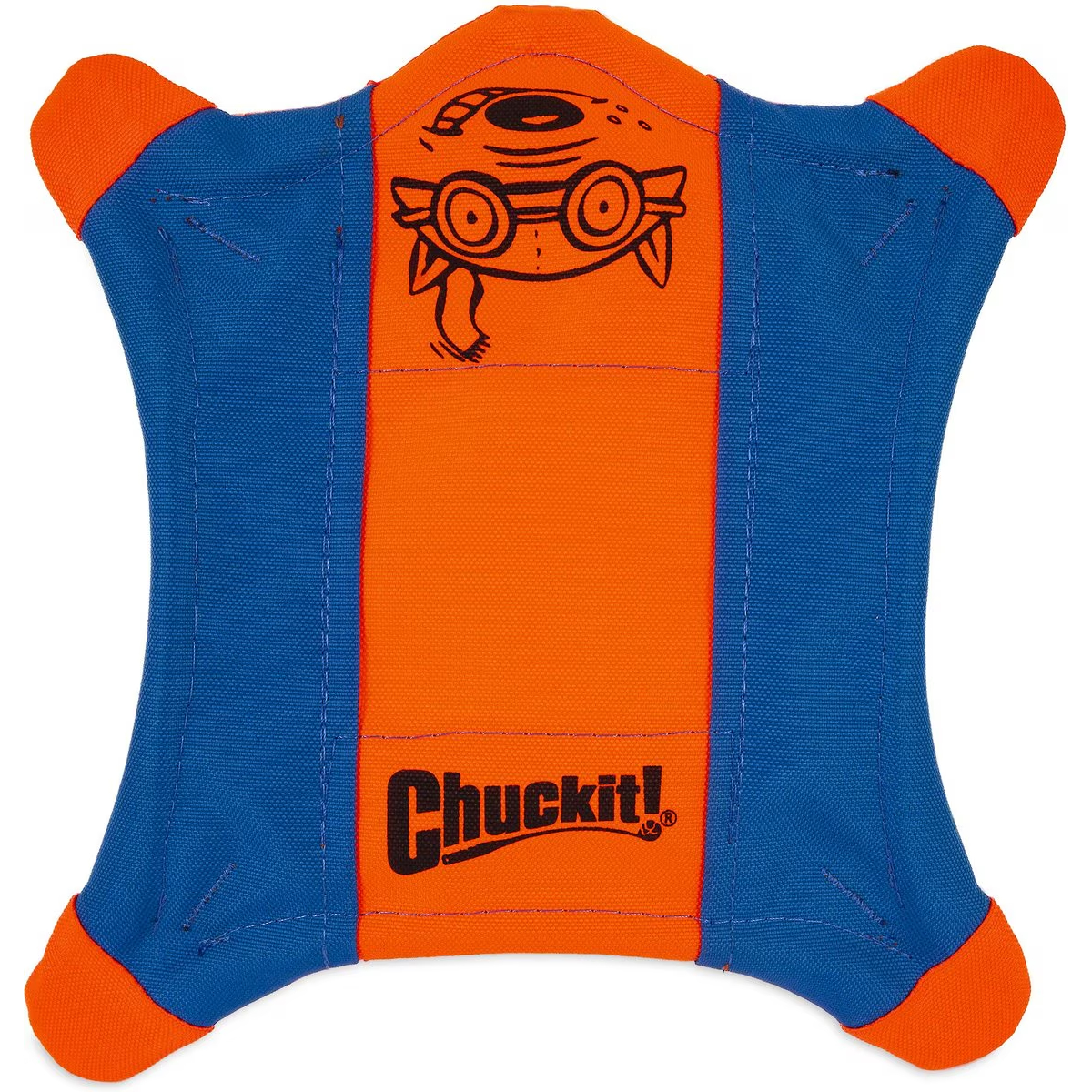
| Material: | Polyester |
| Life stage: | Adult |
| Toy feature: | Exercise |
If you’re a fan of the Chuckit! line of toys, the Chuckit! Flying Squirrel Dog Toy is an excellent addition to your Border Collie’s toy box. It is designed for flight and is easy to pick up, thanks to its raised sides. It also floats, allowing you to use it in water, and the rubber feet on all sides even glow in the dark after bright light exposure. It has a multi-layered construction for durability and is gentle on the gums.
The glow-in-the-dark rubber feet may not hold up, and your dog may chew them off, making supervision while playing with this toy important. So, if your Border Collie is a big chewer, you may want to skip this one. However, this toy is excellent if your dog loves to play fetch and is not an aggressive chewer.
- Designed for flight
- Raised sides
- Glow-in-the-dark feet
- Floats for water play
- Gentle on gums
- Not for aggressive chewers
10. Jolly Pets Romp-n-Roll Dog Toy
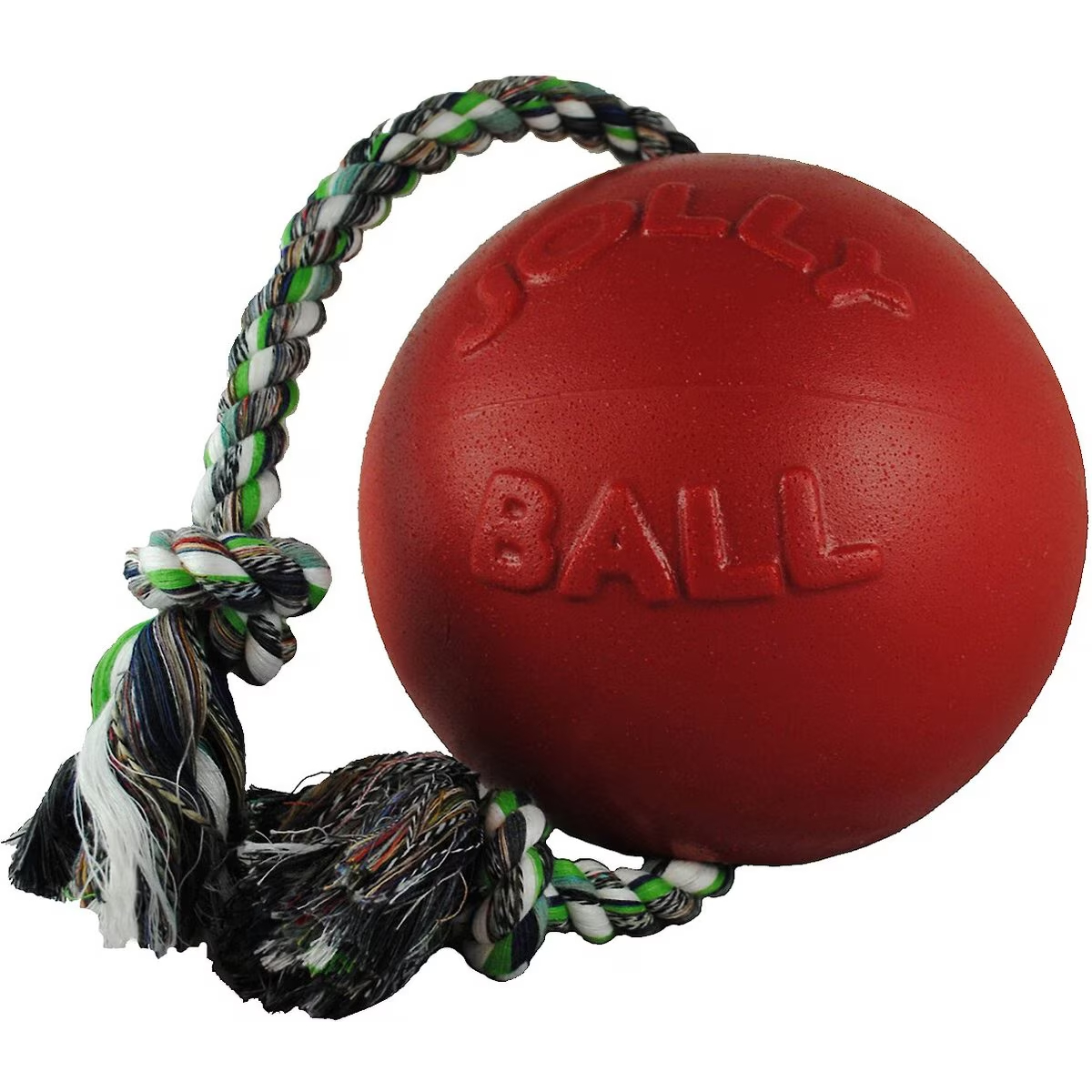
| Material: | Rubber |
| Life stage: | Adult |
| Toy feature: | Water toy |
The Jolly Pets Romp-n-Roll Dog Toy was designed with the aggressive chewer in mind. It’s made with puncture-resistant material that can withstand heavy chewing, and the rope makes it an excellent interactive game for tug-of-war. It’s also excellent for multi-pet households for harmonious playtime. It’s great for chewing, tugging, tossing, and water play. If punctured, the ball will still float, so your BC doesn’t miss out on playtime.
Despite its durability, an aggressive chewer can still chew up the ball, at which point the toy must be discarded. The rope is constructed of yarn and will likely unravel over time. However, the manufacturer offers replacement ropes.
- Puncture-resistant material
- Suitable for water play
- Excellent for chewing, tossing, and tugging
- Replacement rope available
- Rope may unravel
- Not for aggressive chewers

Buyer’s Guide: How to Choose the Best Border Collie Toys
Now that we’ve reviewed the top 10 best Border Collie toys, let’s examine what to look for when buying them.
Durability
Most Border Collies are chewers, known for their strong jaws and high energy. If you have a dog whose number one goal is to destroy every toy in a matter of minutes, you’ll want to look for a toy that is durable and made to last at least longer than a few minutes. Solid, natural rubber or nylon are usually good choices.
Remember that no toy is indestructible; however, some are more durable than others. Toys made of fabrics typically do not last long, especially those with squeakers. It’s best to avoid toys with objects that can be bitten off and swallowed, such as small rubber pieces or pieces of string or yarn, unless you can supervise your BC while playing with the toy.
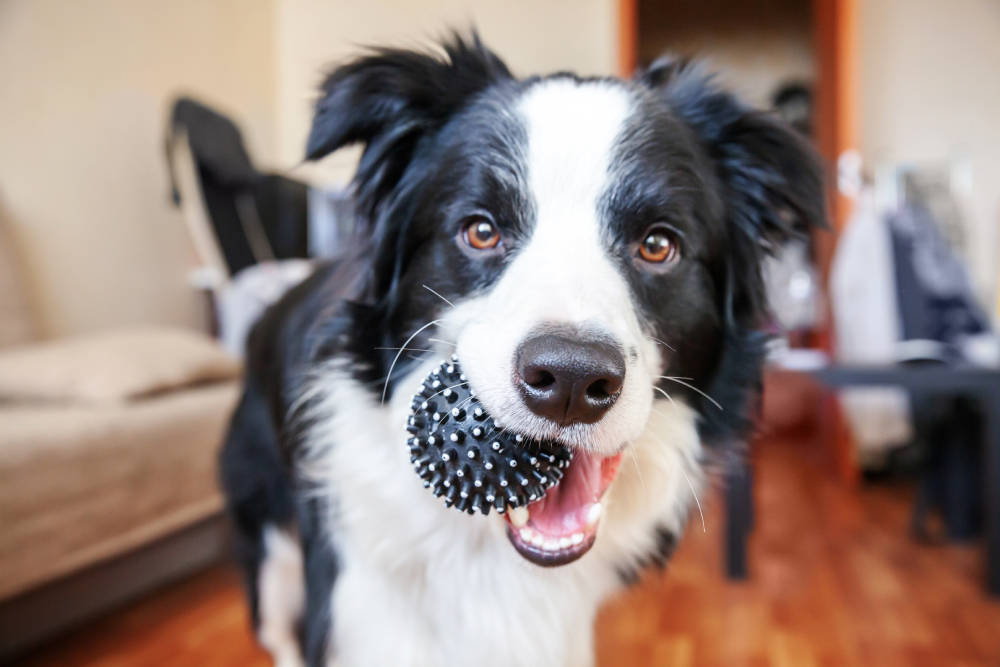
Cost
It’s best to avoid expensive toys that will not last, such as those made of polyester fabrics, unless they are inexpensive and you don’t mind replacing them often. It’s also frustrating to spend a lot on a toy only to see it destroyed quickly. It’s best to buy cheaper toys initially to help you determine your Border Collie’s chewing habits. Then, you can buy more suitable toys for your Border Collie’s chewing and playing habits.
Safety
No toy is indestructible, but you may still encounter toys advertised as “virtually indestructible.” Supervising your Border Collie while playing with a toy is always recommended, regardless of whether it’s advertised as such. Broken-off pieces can quickly become a choking hazard, leading to a dangerous and potentially life-threatening situation.
Our Selection Process For Border Collie Toys
To create this buyer’s guide, our writing team and editorial staff checked customer reviews, brand reputation, and veterinary approval ratings to present the dog toys we think should be highlighted for our readers. In some cases, we conducted hands-on testing along with seeing how much our dogs liked the dog toys. All these factors were considered when selecting these listed dog toys to help you make the best purchase for your furry friends.
Why Trust Dogster?
Since 2004, Dogster has been a trusted brand for dog owners online, which means we have a lot of experience with dog toys. We take pride in promoting the well-being of all dogs—from toy breeds to giant canines. Our in-house veterinarians, writers, and editors examine each product on our lists, ensuring its quality and reputation. As pet owners ourselves, we only want the best for our furry companions. At Dogster, we are transparent about the products we promote. The nutritional information, overall brand reputation, and customer reviews are all considered for these lists. We inform you how we want to be informed.

Conclusion
We hope our list of reviews helps you determine the best type of toys to provide your Border Collie to keep them physically and mentally stimulated. To recap, the Chuckit! Ultra Rubber Ball Tough Dog Toy is durable, can be used on water and land, and has a thick outer rubber core for the toughest chewers. For the best value, try out the Benebone Bacon Flavor Wishbone Tough Dog Chew Toy. This chew toy is bacon-flavored, cleans the teeth, and has a dog-friendly design for easy grasping between the paws. So, all that’s left to do is pick one you think your dog will love and order it!
Featured Image Credit: Jennay Hitesman, Shutterstock






